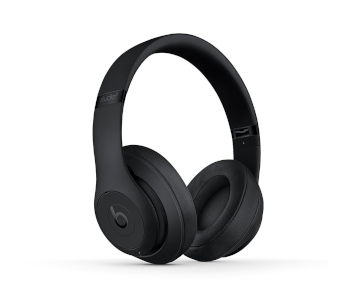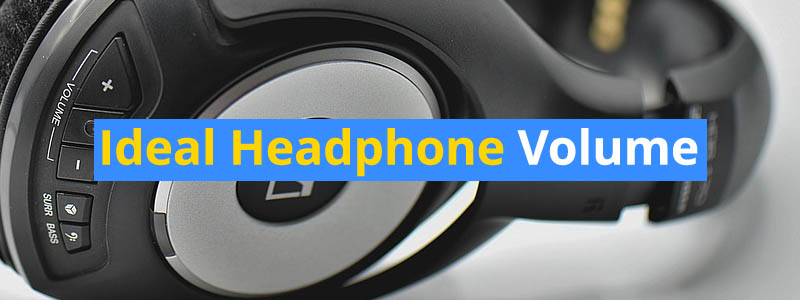Ideal Headphone Volume – How loud should you listen to music?
Are you worried that you are playing the headphone music too loud and it’s damaging your ears? Then you need to get clued up about the ideal headphone volume and the different factors that must be considered. The volume might seem like an afterthought – after all, you simply alter the dials to the settings that feels great. However, when you’re fully informed you may change your volume habits that lead to a safer and more enjoyable overall listening experience.
This guide about volume will fully inform you on how to use the right volume across the different formats, which includes in-ear, over-ear, and on-ear. Furthermore, you’ll learn about the top ways to check if you have been playing the music too loud.
By the end of this guide to volume you’ll have a much better understanding of what volume settings you should be enjoying in any given situation. We poured in a lot of research into this article and are confident you’ll learn a lot of useful info by reading to the very end.
Loud music can lead to hearing loss

It’s no secret that loud music can damage the ears. Often this is reversible and takes the form of a ringing sensation for a short period of time. However, prolonged misuse of loud headphone volume can lead to permanent ear damage. Hearing loss can lead to a big disadvantage in life that can simply be avoided if you use the headphones within a safe decibel level.
The first step is to figure out if you are enjoying the personal audio solution at a level that’s too loud. Here are 5 suggestions on how you can tackle this:
1. The ringing test: go to a quiet room and place a pair of earplugs in your ears. If you hear a ringing sound then it’s a sign that you’re turning up the volume too high. In this case you should avoid all personal audio solutions for 2-3 days and repeat the ringing test. Ideally the ringing should go away before you continue using headphones to avoid further damage to the ears.
2. Headphones at arm’s length: this method is only to be used as a rule of thumb because the audio heard while the headphones are off varies from model to model at the same decibel level. However, hold out the headphones in front of you at arm’s length. If you can hear audio then turn it down until you can’t hear anything. Now it’s safe to enjoy the personal audio solution for long periods of time.
3. Check volume controls: Typically the volume controls should be set to a maximum of around 60-70% to ensure safe levels are maintained. When you have set it to 100% for more than 30 minutes then alarm bells should be going off in your head. Once you turn the volume up it can be easy to get used to that setting, but your ears are slowly getting damaged without realizing it until afterwards.
4. Ask a friend: another simple test is to ask a friend to see if they can hear audio while you are listening to the headphones. This test is not applicable with open back headphones because they are designed to naturally pass audio through.
5. Use a sound meter: you can use a sound meter to figure out the exact volume levels that’s produced by the audio drivers. However, this method is not accurate because the audio that’s experienced by the ears will be different than what’s picked up by the sound meter.
The tips to monitor your volume level above should be done regularly so that you constantly stay within safe levels. Make a habit of using these methods for every listening session to ensure you always use the ideal headphone volume level.
Ideal headphone volume for different fits
Ambient noise is a big reason why we tend to increase the volume higher than what’s actually needed. That’s because ambient noise creeps into the ear canal and we naturally want to turn up the music volume to overcome this. However, this can quickly get out of control as you turn up the volume to very loud levels. Here are a few tips on how to consider the fit so that the volume is more efficiently utilized:
In-ear: to reduce ambient noise you must choose the right eartip size so that there is an effective air seal. This prevents air coming in to your ear canal, which in turn keeps out ambient noise. Most manufacturers provide at least 3 eartips to help you get the right fit. You can also invest in your own eartip to achieve the fit that best matches your ear.
However, if off the shelf eartips do not fit your ears then you can opt for custom made ones. These require you to create a mould of your ears so that the manufacturer is able to create eartips that 100% fit. These are more expensive, but it might be the only option if your ear size is not considered average.
Over-ear: the earpads must have plenty of padding around the ears so that ambient noise is kept out. You should also opt for a closed back design if you’re going to be using these in noisy environments. Avoid the open back design unless you will be enjoying the audio in an isolated environment.
It’s important to choose large earcups so that the entire ear can fit inside the earcups. When the earpad presses down on the ear a gap is created that lets ambient noise creep inside and ruin the audio. This means you’ll need to turn up the volume to maintain clarity.
On-ear: this design offers little noise isolation because the earpads are placed on the outside of the ears. This type of fit is ideal for office use where hearing your colleges can be as important as the audio within the earcups.
Noise cancelation
The noise cancelation feature allows you to maintain excellent audio clarity without having to turn up the volume to the max. That’s because this feature creates sound waves of the opposite phase to the ambient sound waves – thereby eliminating them.
This feature is limited by the decibel level it can block out. Very loud noises will still get through because the strength of the feature is not advanced enough in consumer grade headphones. Furthermore, the feature uses up battery life so you’ll need to use it sparingly. Some noise canceling headphones allow the feature to be adjusted between different levels to best match the environment and situation.
Ideal headphone volume for kids
Headphones for kids tend to have an upper decibel limit that’s capped at 85 decibels. Prolonged listening at higher decibel levels means kids can suffer from permanent ear damage. Without the limitation kids might ignore warnings and listen at the max settings because they do not realize the damage that can be caused. As a parent it’s your responsibility to ensure the headphones come with the decibel limitation feature.
Conclusion
The best volume to enjoy music ultimately comes down to your preferences. Some genres like smooth jazz and classical can be appreciated at a low to average volume setting, while genres like rock/hip-hop provide more impact when the dial is turned towards the maximum.
Take the safety concerns shared in this article seriously so that you never listen to music that can damage your ears. There is no reason why you can’t use your headphones for hours on a daily basis when you use the correct volume.

